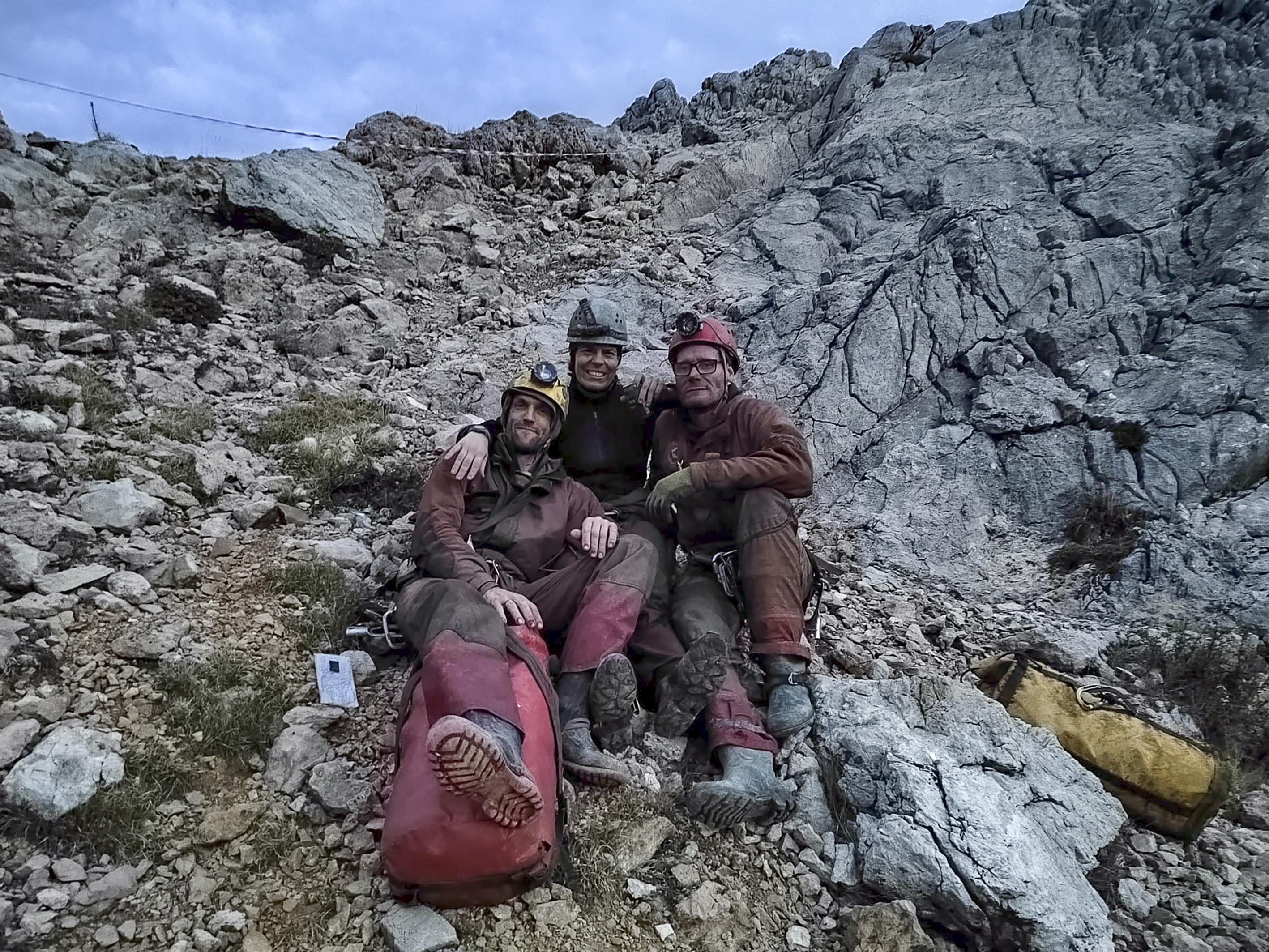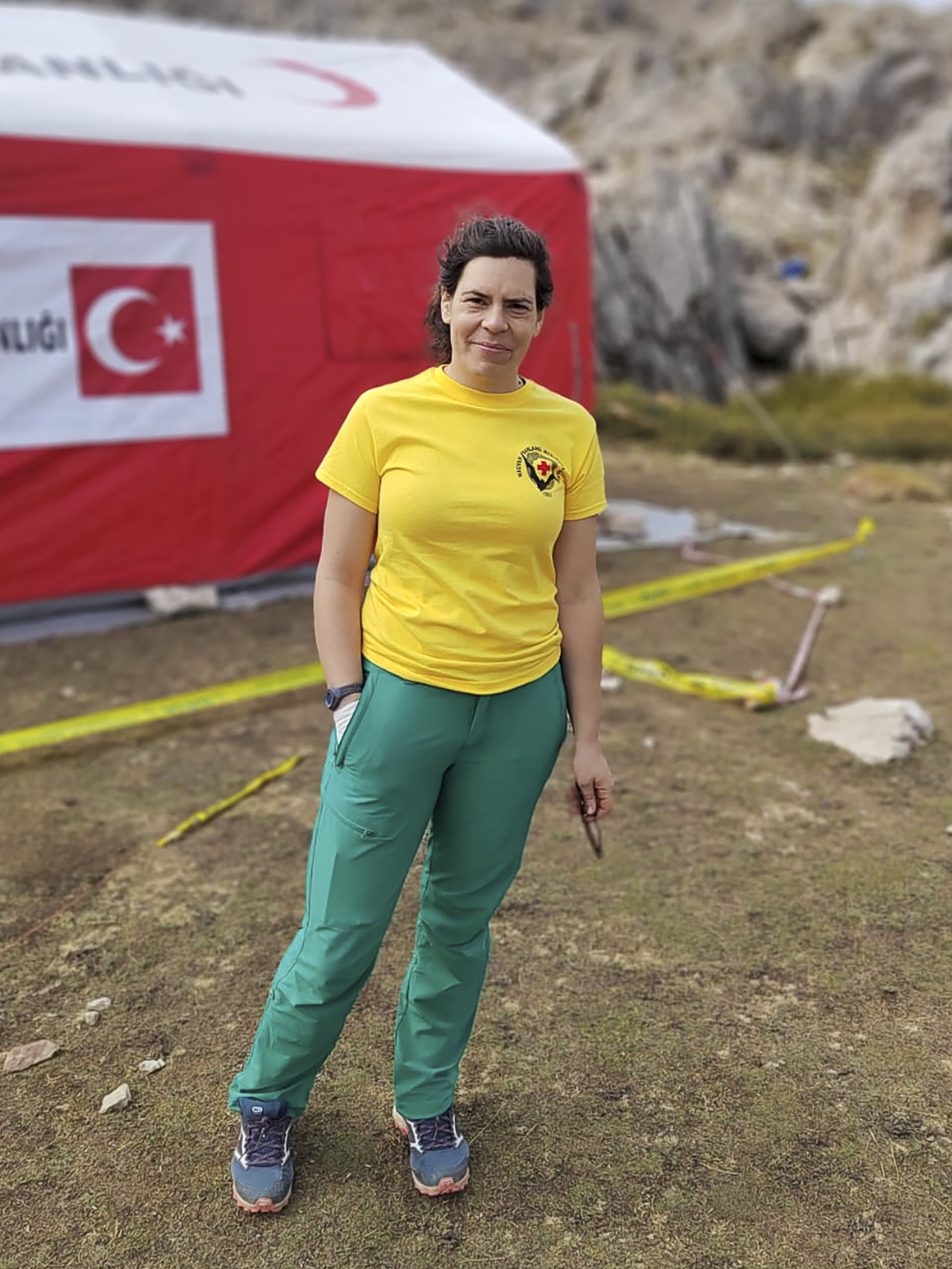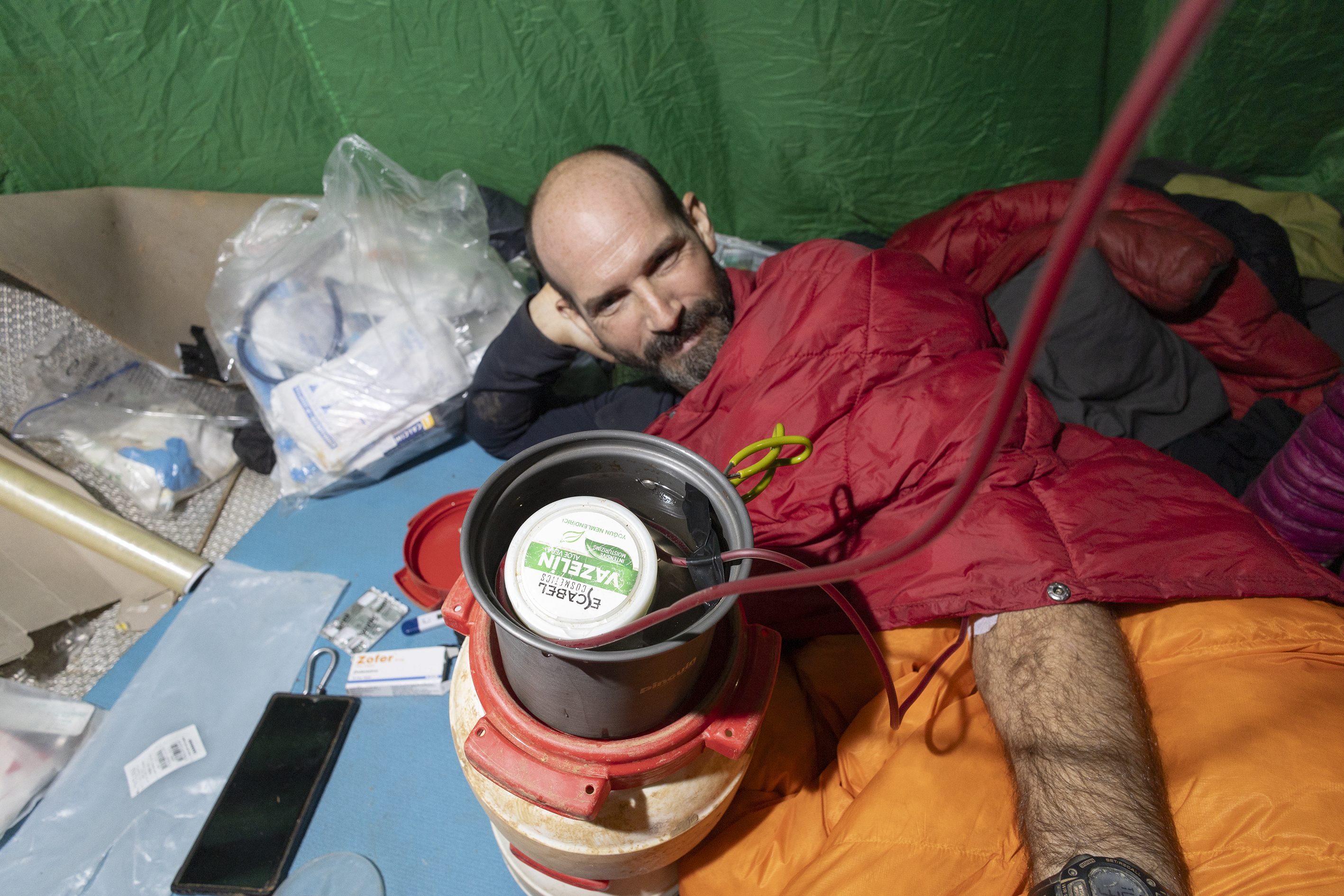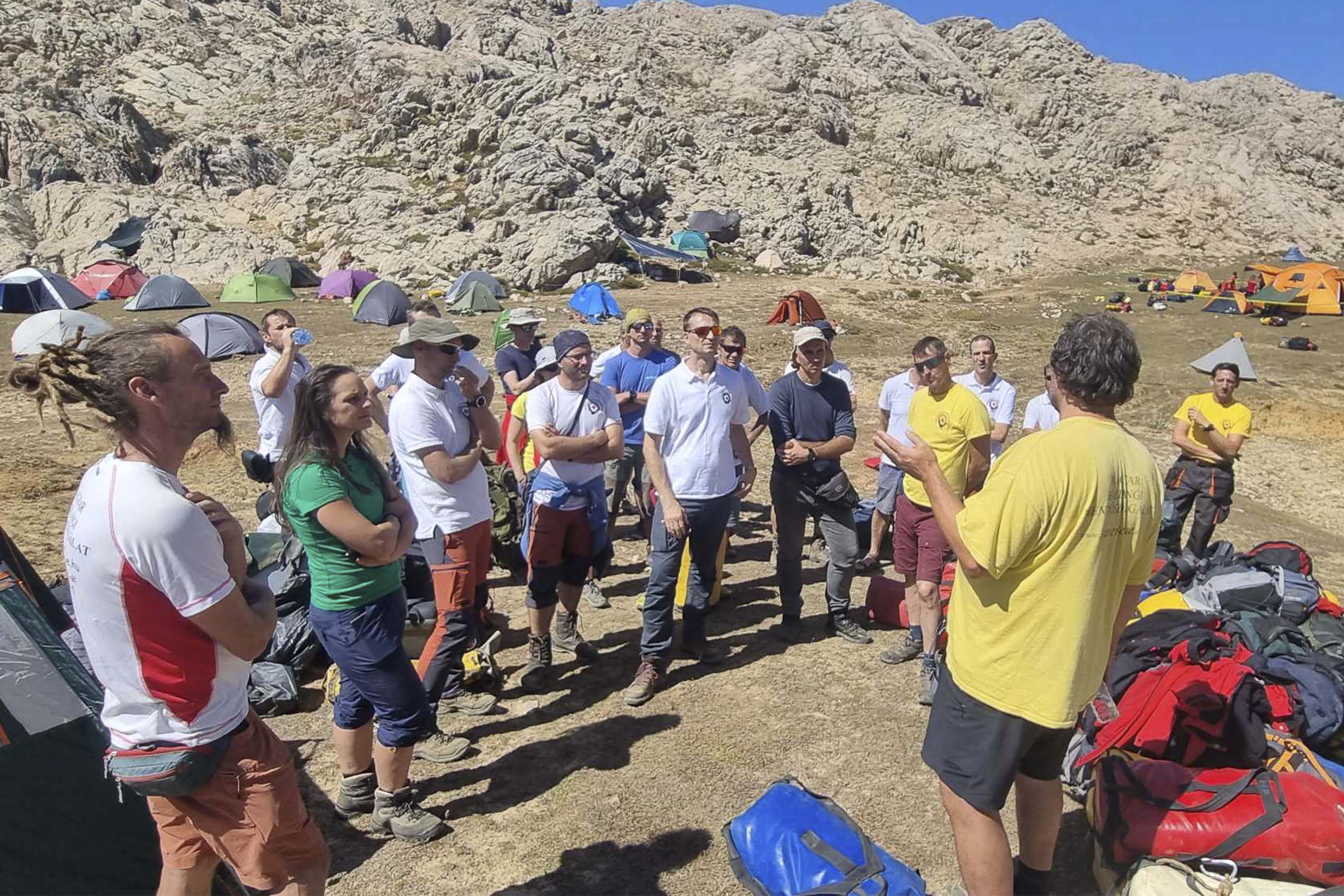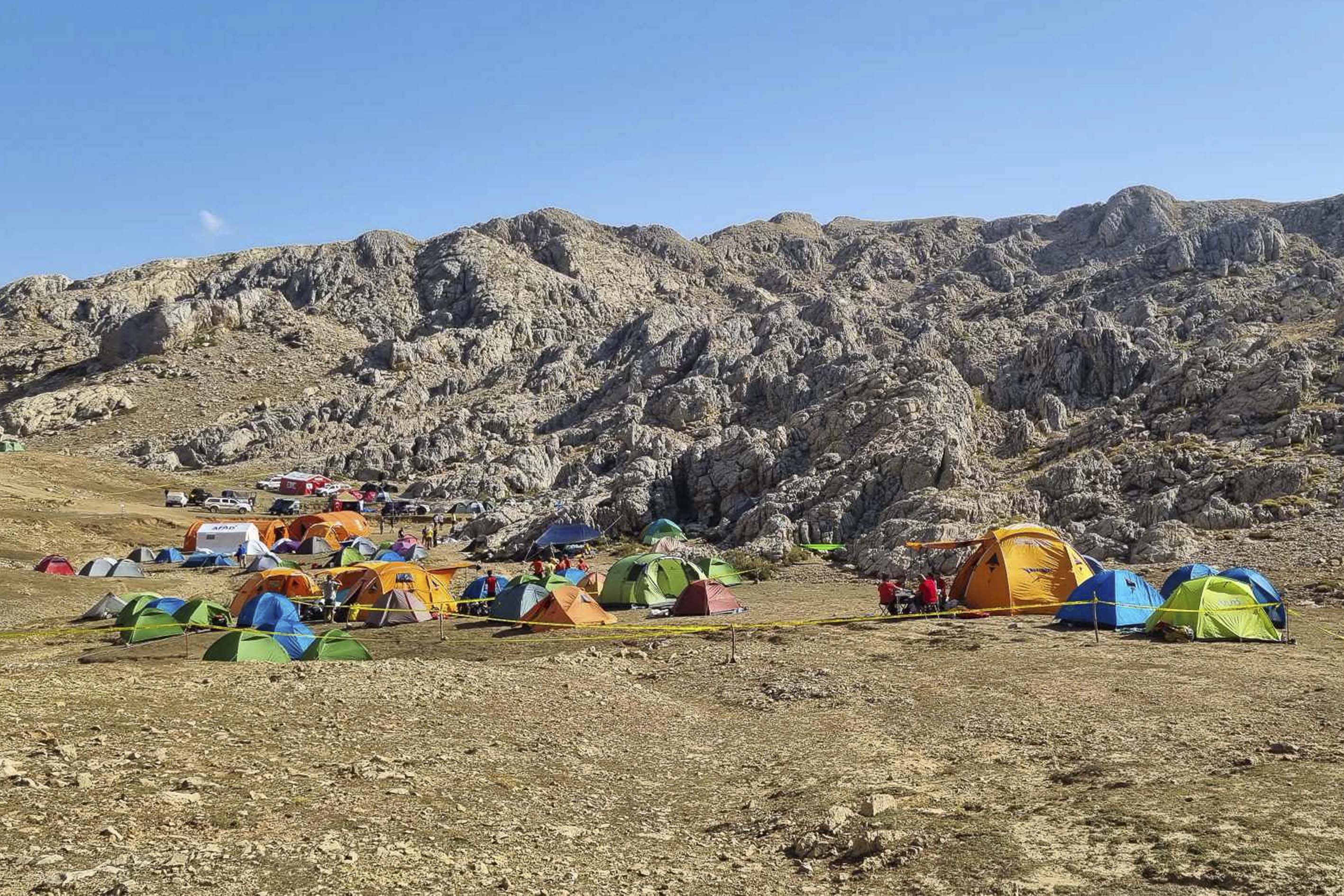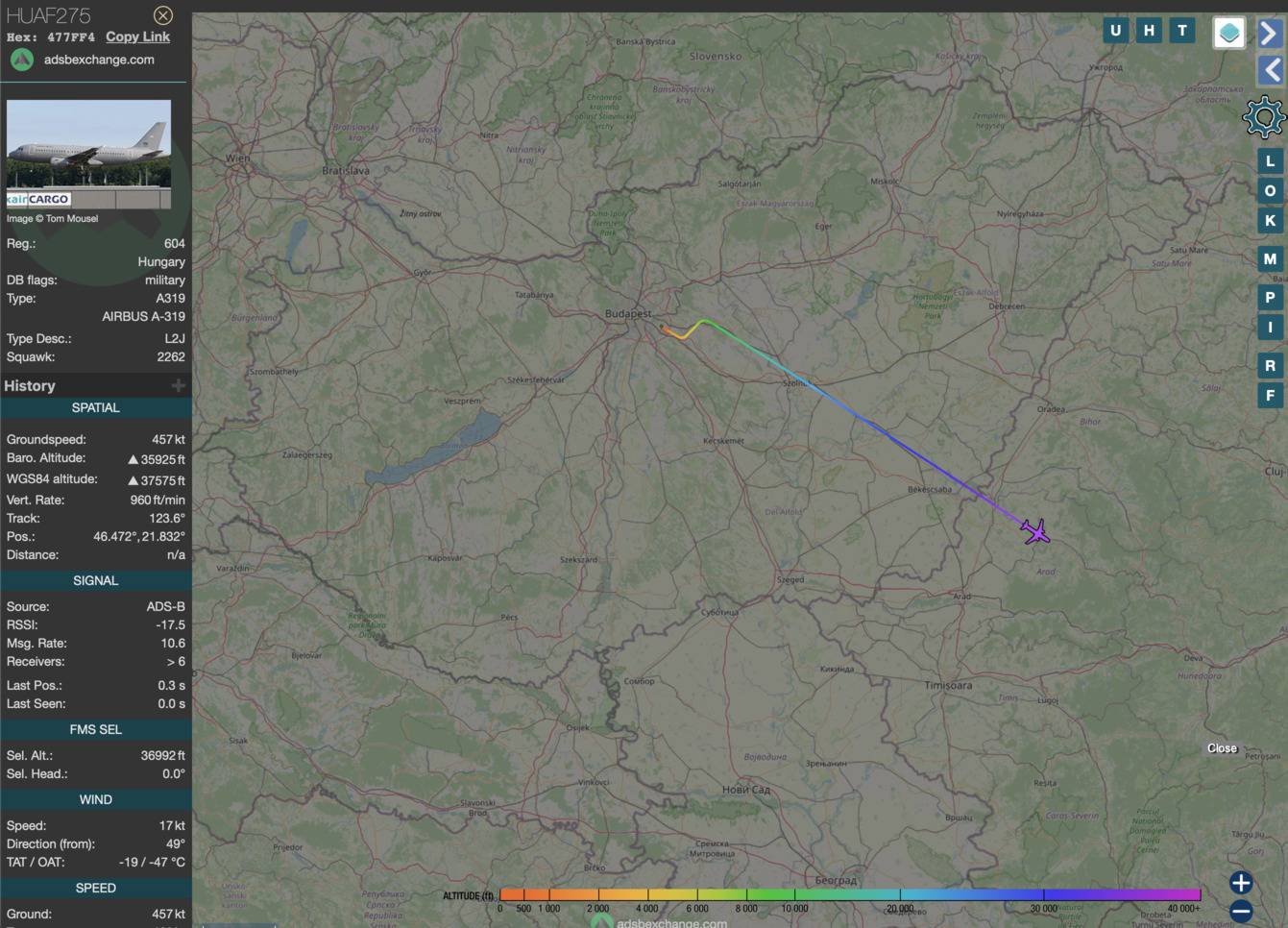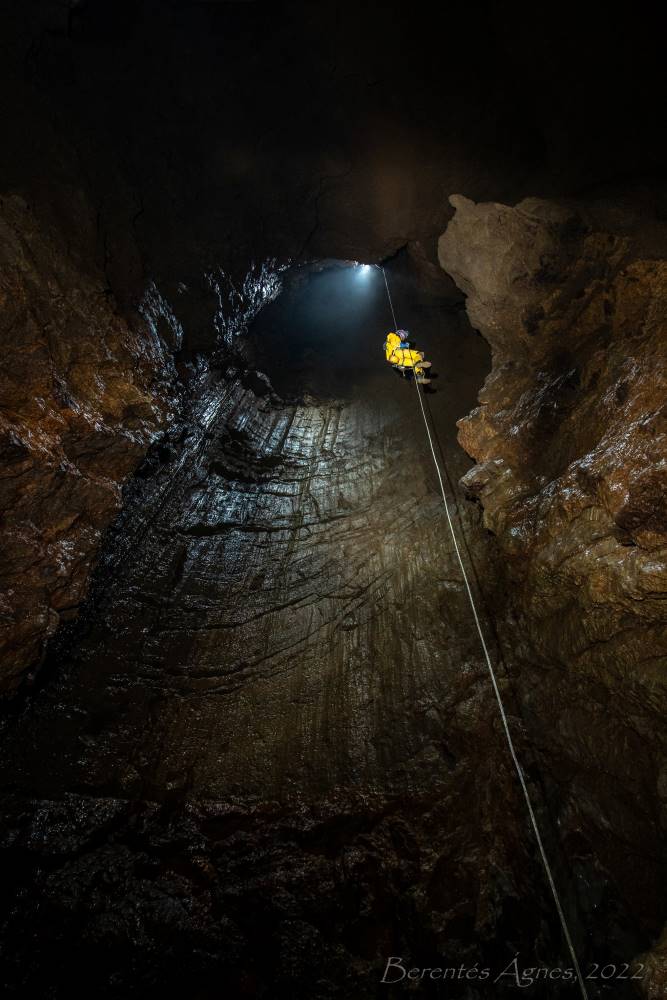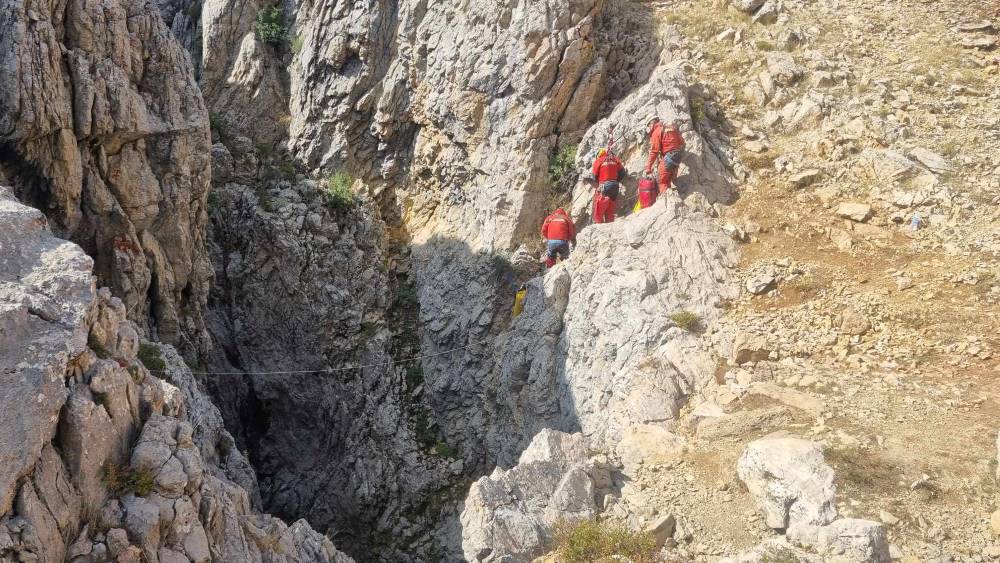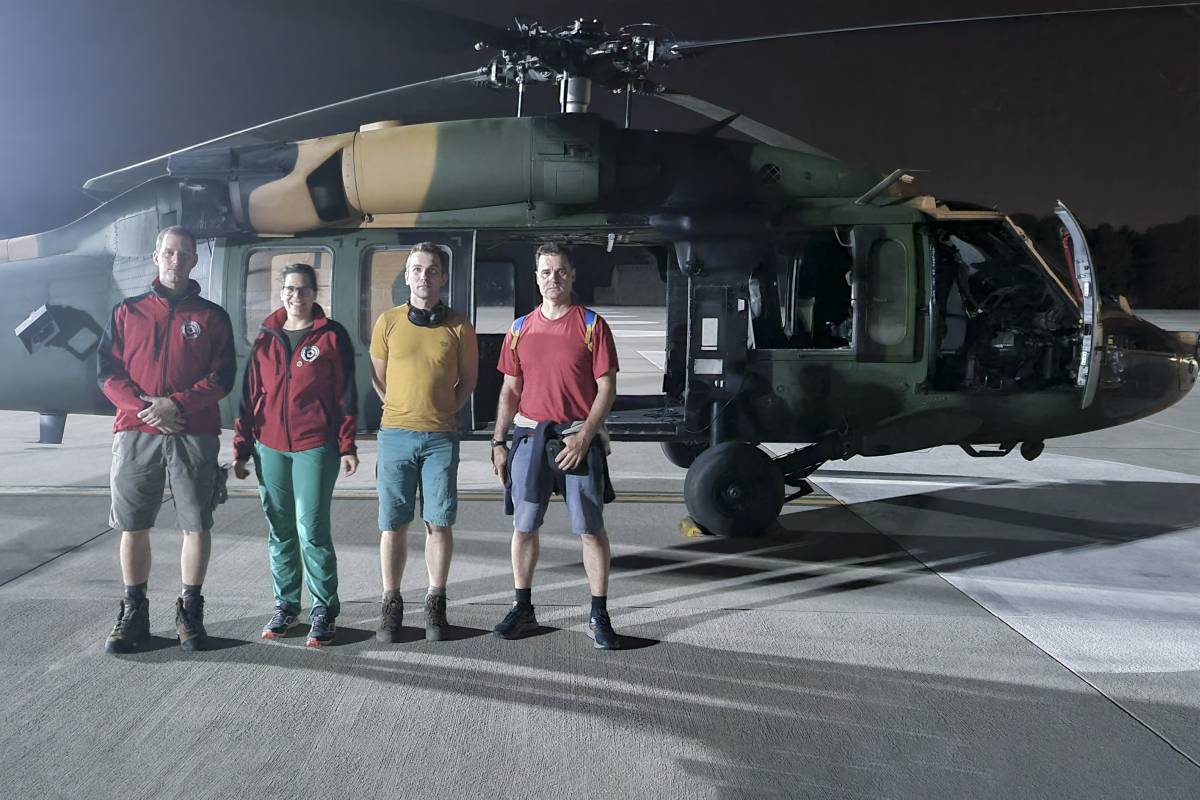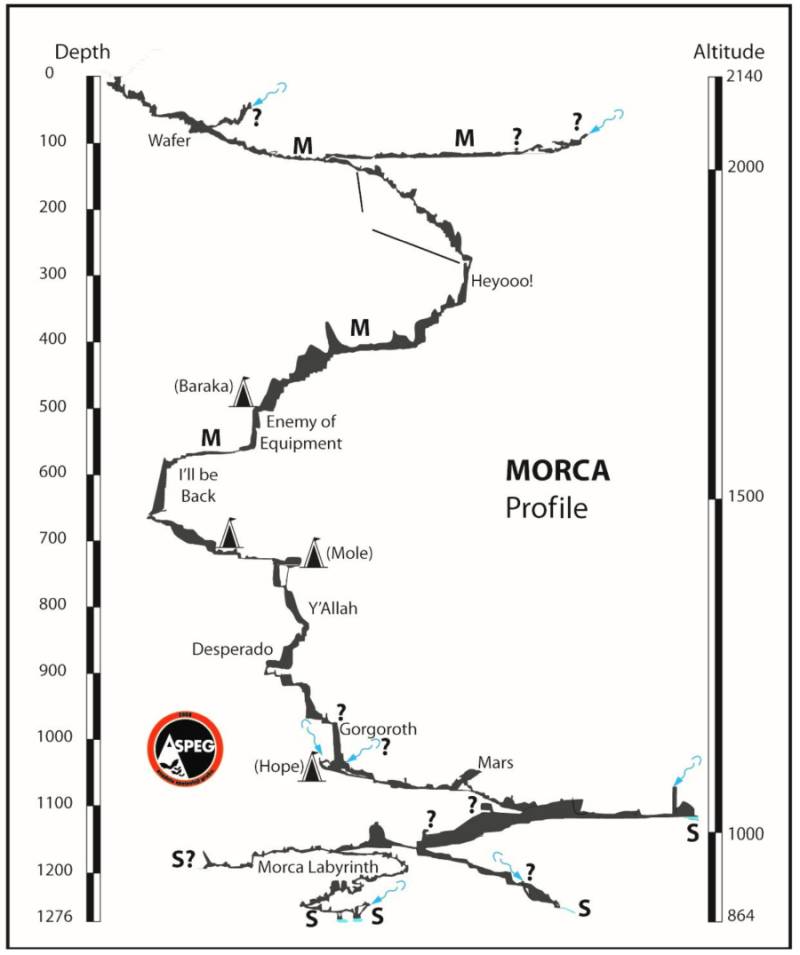UPDATE: September 11, 2023 11:38 p.m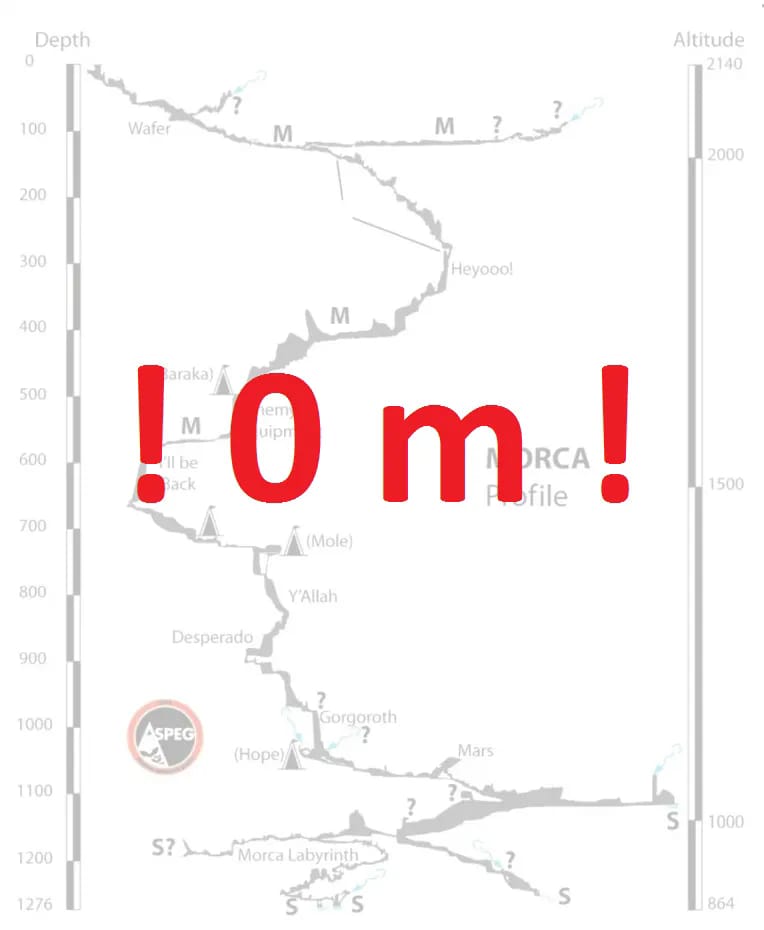
THE STRETCHER WITH MARK HAS REACHED THE SURFACE
After 58.5 hours of hard work with the participation of nearly 200 rescuers on the spot and with the help of almost as many background supporters from 10 countries, in frame of a huge international cooperation as one team, we managed to transport Mark up to the surface from the depth of 1040 m. Details coming soon.
In this caverescue operation participated the members of the Hungarian Cave Rescue Service and the Bakony Cave Rescue Service from Hungary.
UPDATE: September 11, 2023 3:26 p.m
The stretcher with Mark is on level -150m!
On Sunday evening, after a week, the first Hungarian cave rescue team to reach the surface from the Morca cave in Turkey. The team was led by Dr Zsófia Zádor (Zudi), a doctor from the Hungarian Cave Rescue Service.
After receiving an emergency call from members of an international caving expedition last Saturday, ECRA contacted Europe's cave rescue organisations to see if there was a national rescue organisation that could offer a medical team that could be dispatched immediately, provide thorough medical care to the casualty, who was then in a serious, life-threatening condition, and also can reach the HOPE bivouac at -1040 metres. Only the Hungarian team was able to meet these three criteria last Saturday.
One of our team members remained on the surface to start coordinating the rescue, while three others immediately headed towards the patient. Their journey was long and exhausting. In difficult cave conditions, reaching a depth of 1,000 metres is no small feat in itself, comparable to running several marathons. Their transport was made more difficult by the fact that they had to carry several caving bags each in order to set up an intensive care unit next to the injured person.
On arrival, Mark was in a serious, life-threatening condition. During the life-saving medical intervention, high-dose medication was started to protect his stomach, blood clotting factors were restored and he received a transfusion the next day when blood and blood products provided by the Turkish authorities arrived. The therapy had to be carried out in cave conditions, in a cold, essentially damp and dusty environment - such camp conditions that even the preheating of the blood could only be done in water that had been lancinated on a backpacking gas stove. Thanks to the treatment, Mark was on his feet, his general health improved, and after a few days the idea that a stretcher might not be needed to get to the surface seemed realistic.
Zudi stayed with the injured one for days 0-24, not only monitoring his vital signs, not only administering medication, but also trying to keep the spirit alive in Mark and his worried companions. She stayed with the patient until Friday, when she was relieved by the doctor of the Italian team, who arrived meantime. After handing over the patient, this part of the team was able to head for the surface.
Zudi has been caving for 13 years, has been through the entire national training system and has been a member of the Hungarian Cave Rescue Service for 8 years, and has already demonstrated her skills in several Hungarian rescue operations. Besides her rescue service participation, she is also involved in research with several cave exploration teams, is a member of the Laci cave research collective and a regular participant of Hungarian expeditions in Montenegro.
We hope that Mark will surface later today and that he can continue his treatment in hospital as soon as possible.
UPDATE: September 10, 2023 7:09 p.m
The stretcher has reached the -500 m camp. After a short rest the Hungarian-Croatian team begins the transport to the next checkpoint at -120 m. Go Hungary, do a great job, as great as the fellows did in the previous parts of the cave!
UPDATE: September 10, 2023 2:57 a.m
The stretcher with Mark reached the next bivouac at -720m depth.
UPDATE: September 9, 2023 6:01 p.m
The stretcher with Mark reached the next checkpoint at -920m depth.
UPDATE: September 9, 2023 4:50 p.m
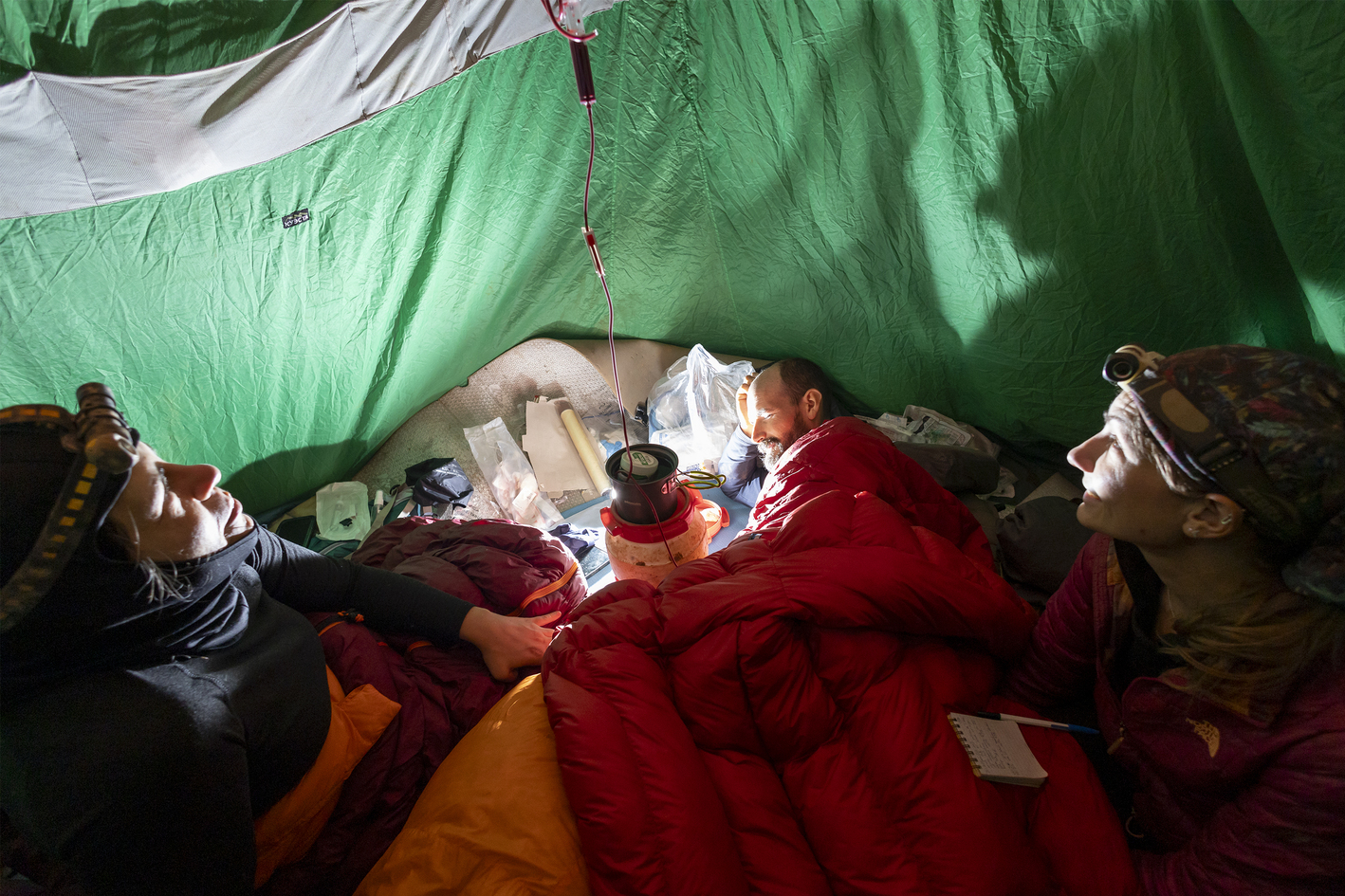 This afternoon, at 14:29 local time, the stretcher left the HOPE bivouac (-1040 m) heading to the surface in the Morca cave in southern Turkey. A team of Bulgarian, Polish, Croatian and Hungarian members will transport it to the next bivouacs at a depth of -720 meters. The injured person is currently being monitored and cared by the Italian team's doctor and assistant.
This afternoon, at 14:29 local time, the stretcher left the HOPE bivouac (-1040 m) heading to the surface in the Morca cave in southern Turkey. A team of Bulgarian, Polish, Croatian and Hungarian members will transport it to the next bivouacs at a depth of -720 meters. The injured person is currently being monitored and cared by the Italian team's doctor and assistant.
In some upper sections of the cave, the rigging of the hauling systems are still going on. The smaller transport groups descend into the cave in the following hours, adjusted right to their tasks, and the goal is for everyone to reach their place at the right time, when the previous team arrives with the stretcher to pass it.
The Hungarian team is planned to take over the transportation somewhere between -400 and 500 meters. The joint Hungarian-Croatian team plans to transport the stretcher up to the -100-150 meter depth. This section contains many smaller and 3 deeper shafts. The largest shaft is 60 meters deep.
The Hungarian team is equipped with more than 500 meters of rope, rigging tools, pyro cartridges, power drills, and heating devices. We received many gears and equipments from our kind supporters. We are really grateful to the Explo.hu, NomadSport and Mountex teams. We have a strict need for this support, as the cave is so muddy, and in some regions so sandy, as after a 1,000-meter descent, the aluminum parts badly wear out and need to be replaced.
The Hungarian team counts 29 cave rescuers, making it the second largest team in this multinational operation, following so close the leading Italian team with 40 persons. Several members of the original research expedition, including a Hungarian speleologist woman and 4 Hungarian speleologists from Cluj Napoca (Romania), are still at the site, and they are supporting the rescue teams.
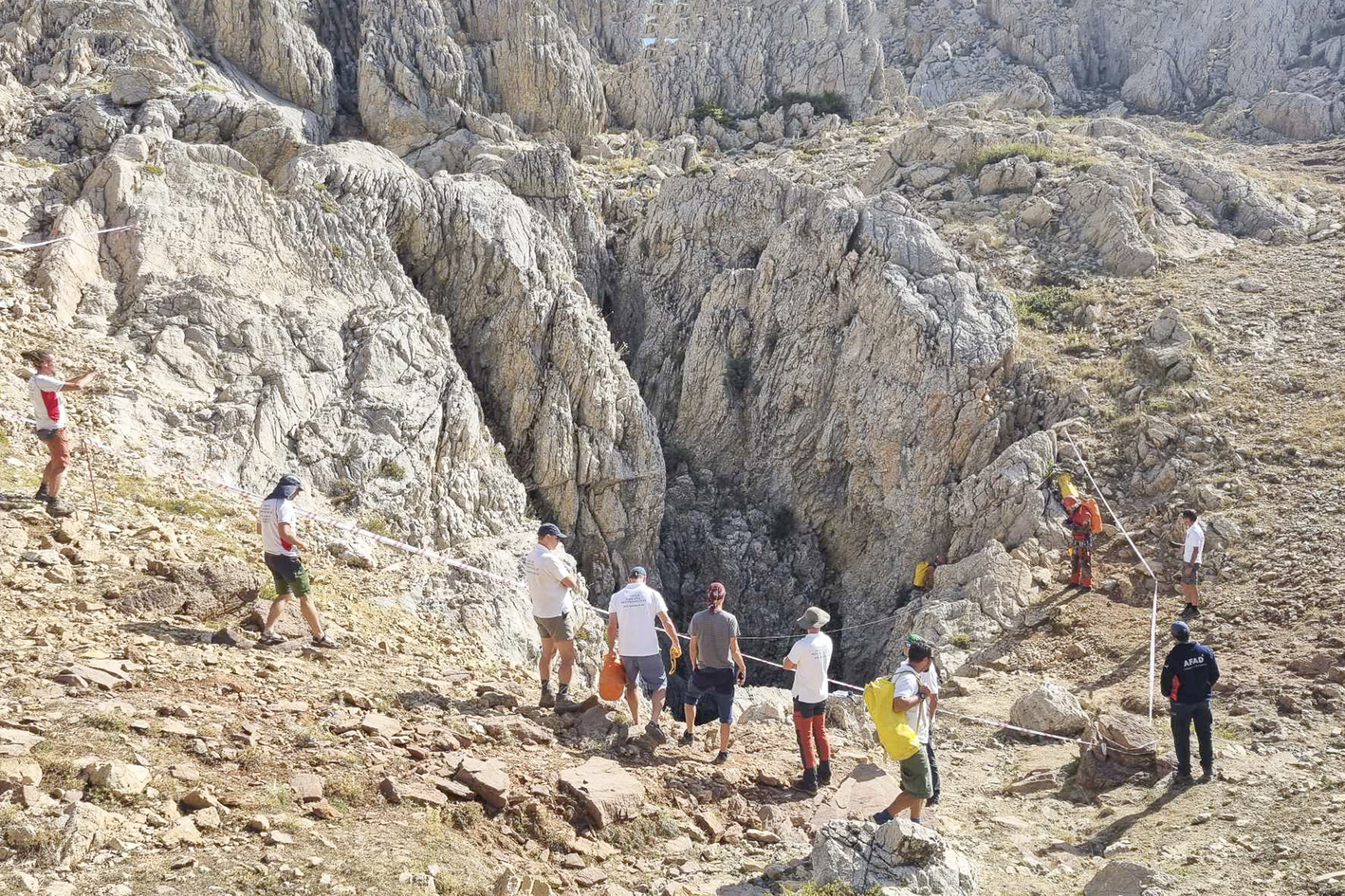 The Hungarian team was the first to arrive in the cave. The Hungarian Cave Rescue Services first responder medical team arrived to the scene last Sunday, and they began providing urgent, life-saving medical care to the 40-year-old Mark Dickey, who was found in a life-threatening condition. This group set up a medical point at -1040 meters, where they could provide intensive care. Addition to proper medication, they could also perform blood transfusions.
The Hungarian team was the first to arrive in the cave. The Hungarian Cave Rescue Services first responder medical team arrived to the scene last Sunday, and they began providing urgent, life-saving medical care to the 40-year-old Mark Dickey, who was found in a life-threatening condition. This group set up a medical point at -1040 meters, where they could provide intensive care. Addition to proper medication, they could also perform blood transfusions.
According to the rescue operations teams view, the rigging of the cave is promising, they plan to continue the extracting as fast as possible. They plan to take brakes if the condition and needs of Mark forces them to do so. The underlined goal is to surface him safely as soon as possible, to forward him to a hospital for the further medical care.
We will continue when further news arrives.
Photos: Berentés Ágnes
UPDATE: September 8, 2023 8:47 p.m
Last evening, on 7. September, a 20-person Hungarian cave rescue unit had left to Turkey with the help of the Ministry of Foreign Affairs and Trade, the Ministry of Defense and the Hungarian Defense Forces. Our 20 rescuers joined this morning to the multinational team, which is currently being attended by about 170 people.
In addition to the Hungarian team, Turkish, Italian, Croatian, Bulgarian, Slovenian, and Polish cave rescue teams are working in the operation, and three individual participating cavers from the USA are on the site. Based on the decision of the ECRA management, the chief of the operation is the head of the Italian contingent, mr. Giuseppe Conti.
Under the surface, the cave is getting to be prepared for the rescue in the last few days. Bulgarian cave rescuers are widening the narrow, meander passages between -600 and -750, trying to find or create the smoothest path for the injured caver. This widening means that they try to increase the width or height of the passages with micro-blasting in suitable places, with chisels or just hammers in unsuitable places. This is necessary because a healthy caver can fit in a much narrower space than a cave rescue stretcher, especially if there is also an injured person in pain in it.
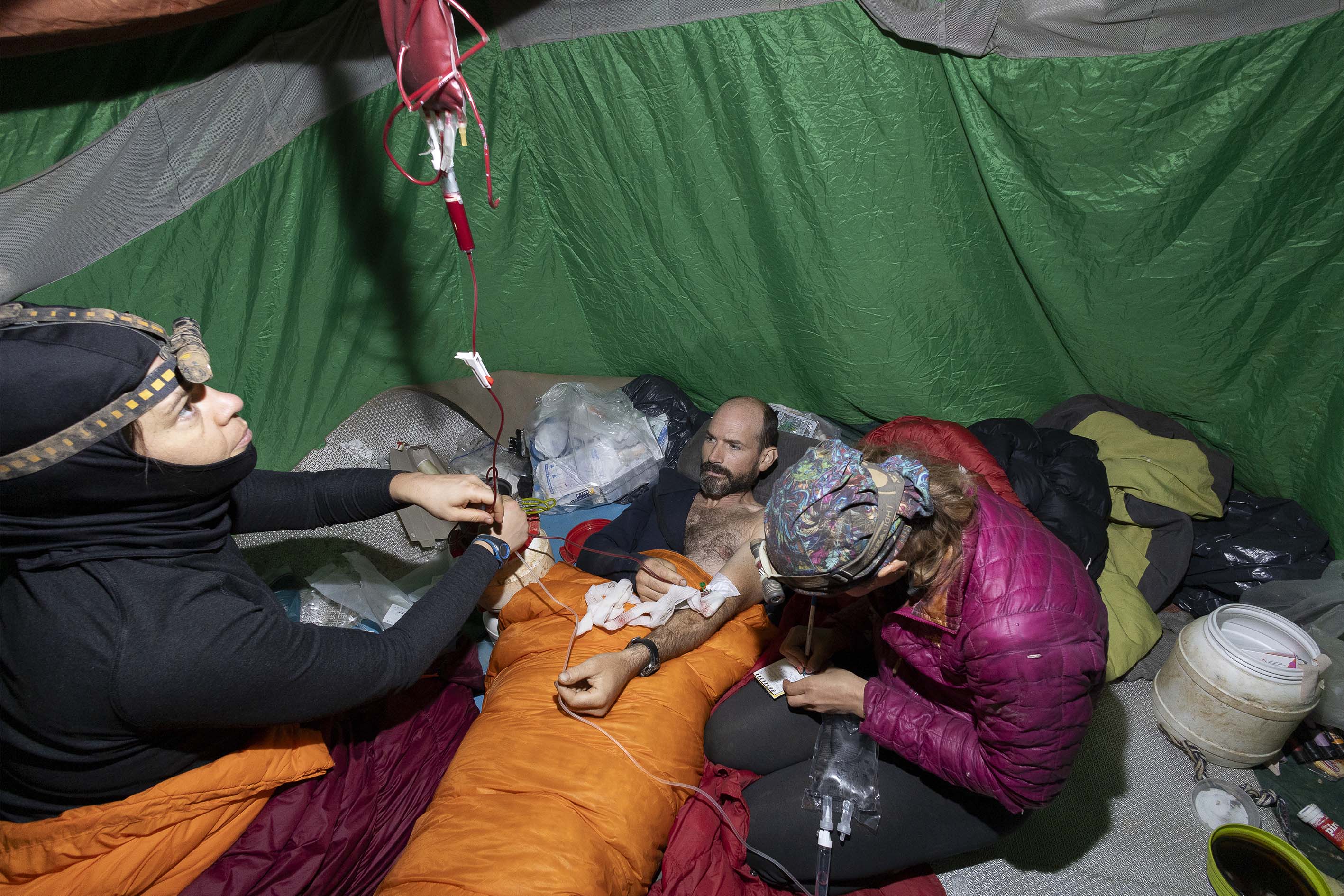 In addition to the narrow passages, many of the ropes of the vertical parts also need renovation. According to the information from the cave, the cave is quite well rigged up to -500 meters, which means that the ropes are positioned in the right place, far enough from the falls, the fixed points are secure and the ropes themselves are still in good condition. However, the parts below 500 meters were rigged in 'expedition style'. In these places, new ropes must be installed on which the large number of cave rescuers can climb and descent safely. In addition to these ropes, the hauling systems also have to be created that are needed to move the stretcher upwards.
In addition to the narrow passages, many of the ropes of the vertical parts also need renovation. According to the information from the cave, the cave is quite well rigged up to -500 meters, which means that the ropes are positioned in the right place, far enough from the falls, the fixed points are secure and the ropes themselves are still in good condition. However, the parts below 500 meters were rigged in 'expedition style'. In these places, new ropes must be installed on which the large number of cave rescuers can climb and descent safely. In addition to these ropes, the hauling systems also have to be created that are needed to move the stretcher upwards.
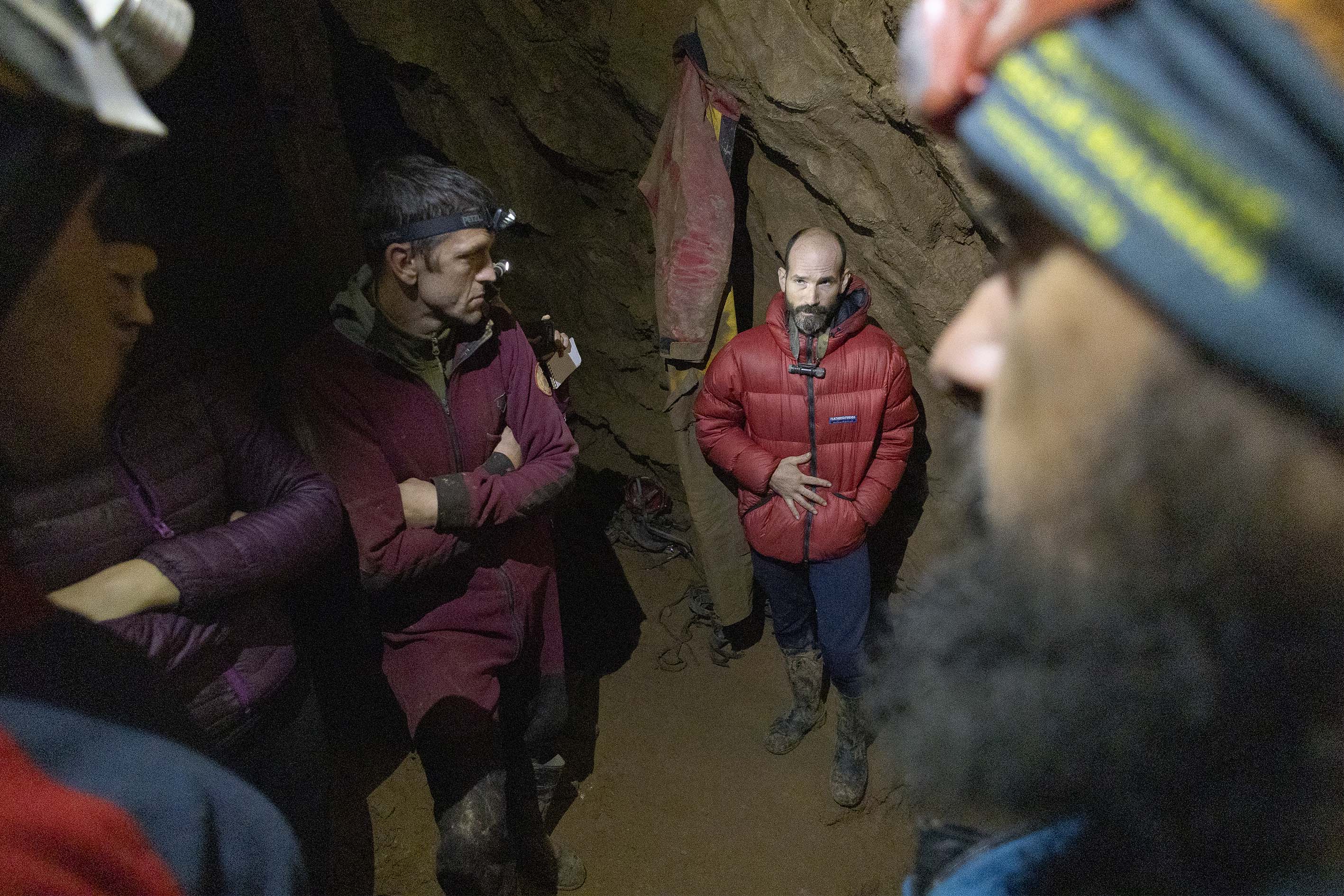 The Hungarian medical team was the first to arrive to the patieng, began treating the injured, and they have been underground for 5 days. According to our on-site information, their replacement team arrived today, in the person of the doctor and assistant of the Italian cave rescue team. In order to support their work, we gave them a mobile blood gas analyzer for use, which was had available by Siemens-Healthcare és Diagnosticum Zrt. Of Hungary. Our medical team will stay with Mark who requires continuous monitoring and care.
The Hungarian medical team was the first to arrive to the patieng, began treating the injured, and they have been underground for 5 days. According to our on-site information, their replacement team arrived today, in the person of the doctor and assistant of the Italian cave rescue team. In order to support their work, we gave them a mobile blood gas analyzer for use, which was had available by Siemens-Healthcare és Diagnosticum Zrt. Of Hungary. Our medical team will stay with Mark who requires continuous monitoring and care.
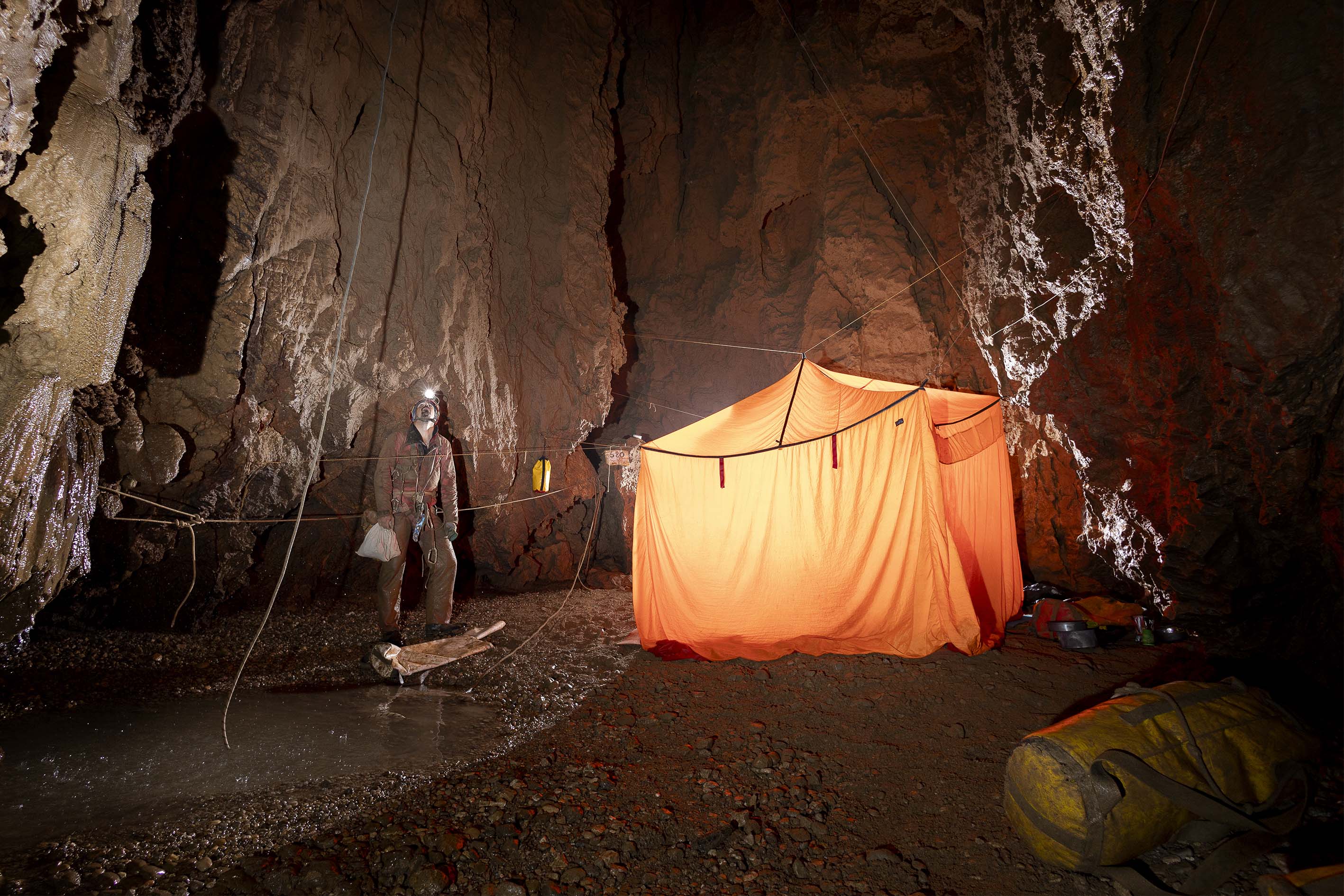 As soon as the construction of the cave and the status of the Mark allow, the Italian management wants to start the process of transporting him to the surface. In the planning phase, the planned progress was currently 20 m/h.
As soon as the construction of the cave and the status of the Mark allow, the Italian management wants to start the process of transporting him to the surface. In the planning phase, the planned progress was currently 20 m/h.
We will continue when further news arrives.
Photos: Berentés Ágnes és Sándor Zsolt
UPDATE: September 7, 2023 9:20 p.m
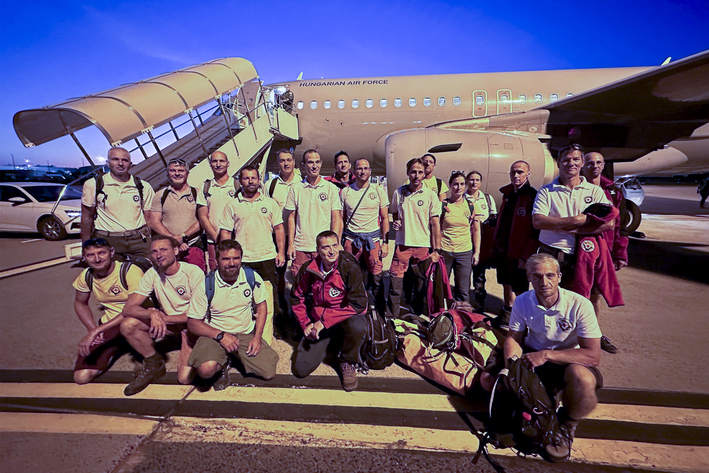 20 Hungarian cave rescuers departed from Budapest this evening to join the rescue operation in the Morca cave in Turkey. In addition to the local Turkish team, Hungarian, Bulgarian, Croatian, Italian and Polish units will participate in the large-scale operation. The rescue operation is led by the Italian contingent according to the decision of the ECRA management.
20 Hungarian cave rescuers departed from Budapest this evening to join the rescue operation in the Morca cave in Turkey. In addition to the local Turkish team, Hungarian, Bulgarian, Croatian, Italian and Polish units will participate in the large-scale operation. The rescue operation is led by the Italian contingent according to the decision of the ECRA management.
Transporting the injured caver to the surface begins as soon as possible after the cave and the injured person has been prepared for transport from a depth of 1,000 meters.
We would like to thank the Ministry of Foreign Affairs and Trade and the Hungarian Defense Forces for their contribution to flight.
Related information and more photos of the Hungarian Defence Forces can be found here and here!
UPDATE: September 5, 2023 2:45 p.m
Bad news from the rescue in the Morca cave in southern Turkey
At the end of August 2023, an international caving expedition with the participation of Hungarian cavers began in the Morca Cave in the Taurus Mountains in southern Turkey.
One of the leading men of the expedition, a 40-year-old American caver, suddenly fell ill with gastrointestinal bleeding. Due to the sickness he is not able to leave the cave by his own strength. The leaders of the caving expedition asked for help from the European organization of cave rescue services (ECRA), The organisation firstly requested a medical team that could depart immediately and provide meaningful medical care after reaching the injured person at a depth of -1,000 meters. In Europe, only the Hungarian Cave Rescue Service was able to provide such a team on Sunday.
The Hungarian cave rescuers arrived at the scene in two separate groups first on Sunday and then on Monday and began the descent into the cave. The first group reached patient with great difficulty, they set up an intensive care tent in bivouac. After starting the medical care, the patient also received a blood transfusion.
The second group of Hungarian cave rescuers arrived at the entrance of the cave this morning, and they made a one-day journey to the victim with additional blood and frozen blood plasma.
The rest of the group are trying to establish a reliable communication link with the medical team at a depth of 1,000 meters. They are trying to organize the supply of the rescuers that are currently working from the surface. Rescue operations of this kind are very rare and this presents a special difficulty in the administrative processes of the authorities.
Currently, members of the Turkish-led international search and rescue team, 2 Bulgarian and 9 Hungarian cave rescuers, are participating in the rescue operation. Several other international rescue teams, in addition to the Hungarians, are Croatian, Italian, Slovenian and American cave rescuers are waiting for the official invitation from the authorities.
The injured person is currently at a depth of -1000 meters. In the history of cave rescues in the world, the record so far is held by the rescue carried out in the Riesending cave in Germany in 2014. In this cave the explorer with a stable but polytraumatized skull was brought to the surface in 11 days of strenuous work by some 200 people. From the preliminary information, we are at the beginning of a cave rescue operation of a similar size.
The Hungarian Cave Rescue Service is a self-sustaining NGO made up of volunteers that has been operating for more than 60 years. Our promotions so far, as well as the current one, are financed from the membership fees of our members, form some rarely available tender sources, and mainly from the 1% offering of personal income taxes This rescue operation is still at the beginning, but it has already put a significant strain on our budget. If you have the opportunity to support our work with any amount, please help us now. You can send your support to us by transferring it to our account::
IBAN: HU07162001370018762800000000, Magnet Bank, SWIFT: HBWEHUHB, Name: Magyar Barlangi Mentoszolgalat.
As soon as we get more authentic news from the cave, we shall update our report.
FIRST NEWS: September 3, 2023
Late evening on Saturday, the 2nd of September 2023, a phone call was received by the Hungarian Cave Rescue Service requesting professional help.
A 40-year-old caver fell ill during an international expedition exploring the Morca cave in the south of Turkey. His condition is serious: he has a gastrointestinal bleeding that is not subsiding, his condition is even showing a worsening trend, and when the report was received, he was clearly unable to leave the underground camp by his own strength. The camp is situated at a depth of about 1,000 meters!
The rescue began under the leadership of the Turkish organizations together with the coordination of the European Cave Rescue Organization (ECRA).
According to ECRA, the medical team that can descend and work at such extreme depths and that can be mobilised the fastest is from the Hungarian Cave Rescue Service. After consultation with the Turkish expedition, and with the cooperation of the Hungarian diplomatic institutions and the Hungarian Counter-Terrorism Center, a four-person medical team of the Hungarian Cave Rescue Service set off for the rescue on Sunday afternoon.
The main task of the medical team is to carry out a professional examination of the sick explorer and begin his stabilisation and first treatment. The work of the rescue team is led by an intensive care specialist.
The team is bringing with them diagnostic and therapeutic instruments that may be necessary for first aid in a serious, life-threatening situation. Their work is complicated by the fact that the injured caver is waiting for help at an extreme depth. The path leading to the victim from the entrance of the cave requires almost a whole day of continuous descent on ropes and difficult on terrain, often in passages semi filled with water. Another difficulty will be the fatigue.
By the time the Hungarian cave rescuers arrive at the patient and begin the treatment, they will have been continuously on their feet for roughly two days.
Both the Hungarian Cave Rescue Service and ECRA's other member organizations, including Italian and Bulgarian cave rescuers, are at standby, and a decision will be made regarding their departure to the cave according to the news that will arrive in the next few hours.
The injured speleologist is a well-known caver in the international speleological world. He is a highly trained caver and a cave rescuer himself. He has participated in many caving expeditions in different Karts regions of the world, and has been a member of Hungarian expeditions in Montenegro for many years. In addition to his activities as a speleologist, he is also the secretary of the ECRA medical committee and an instructor for cave rescue organizations in the USA.
Picture below: vertical map of the Morca cave. The injured person is in (HOPE) underground camp.



